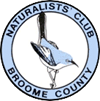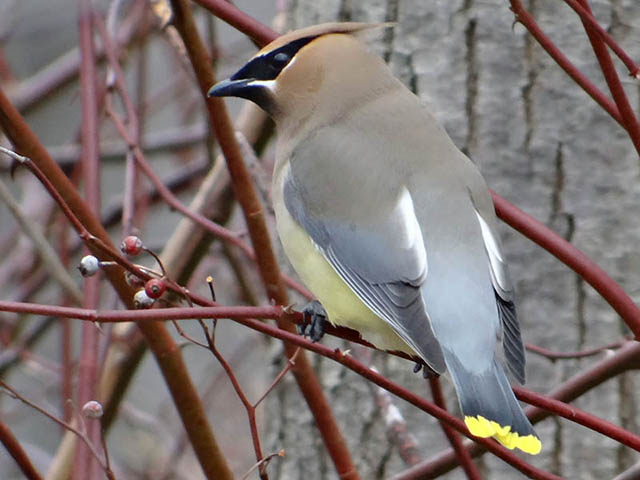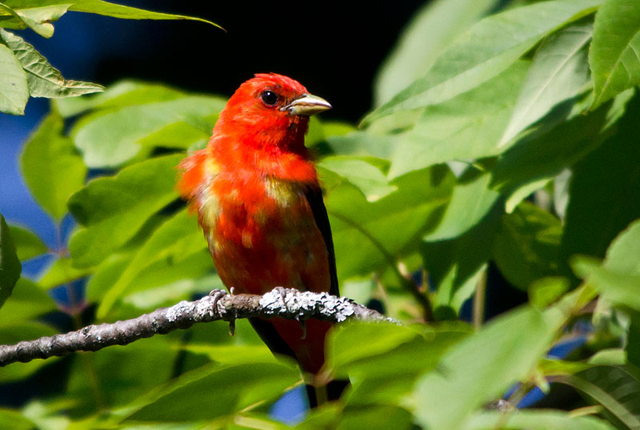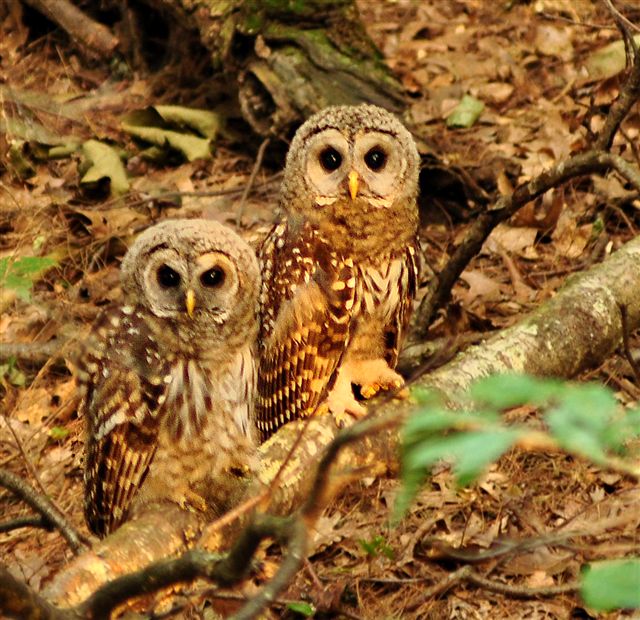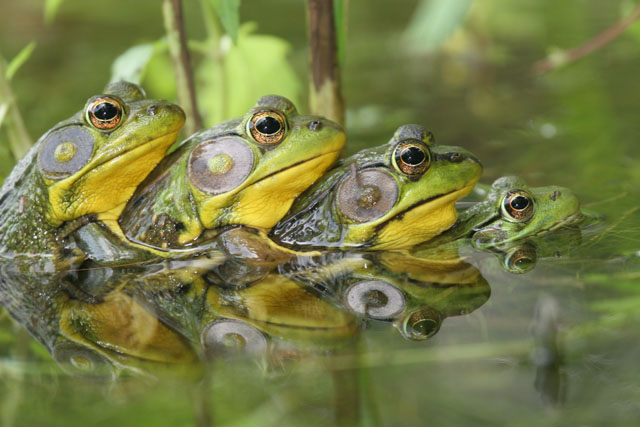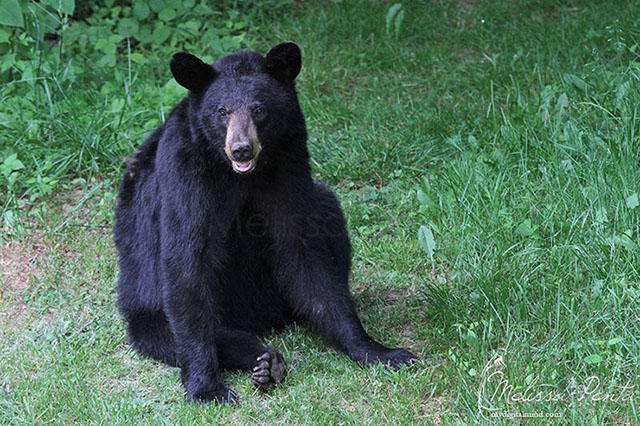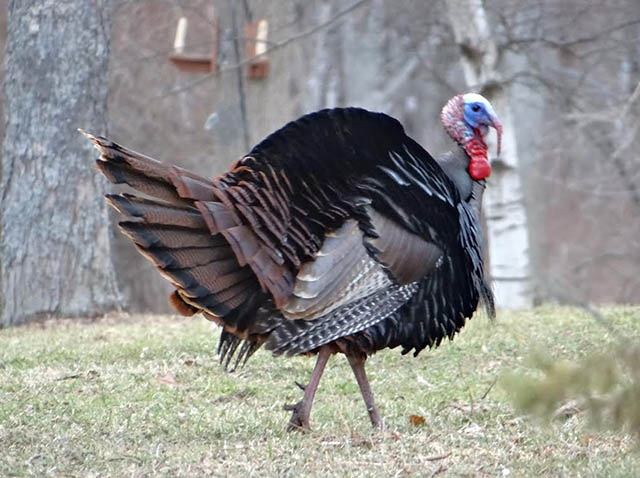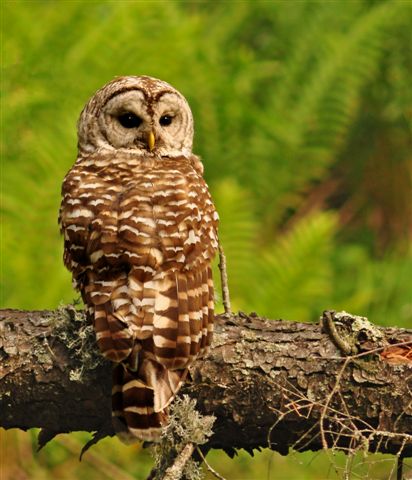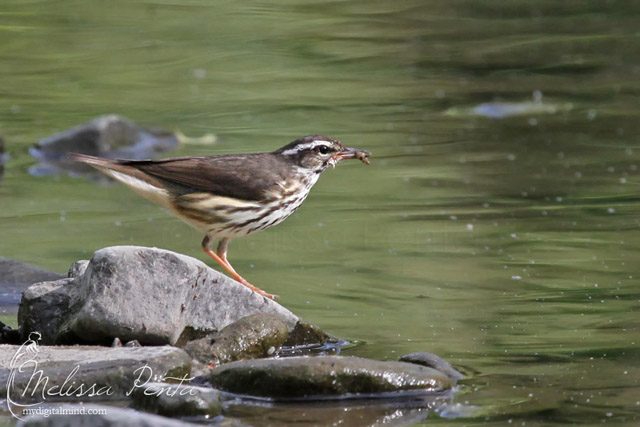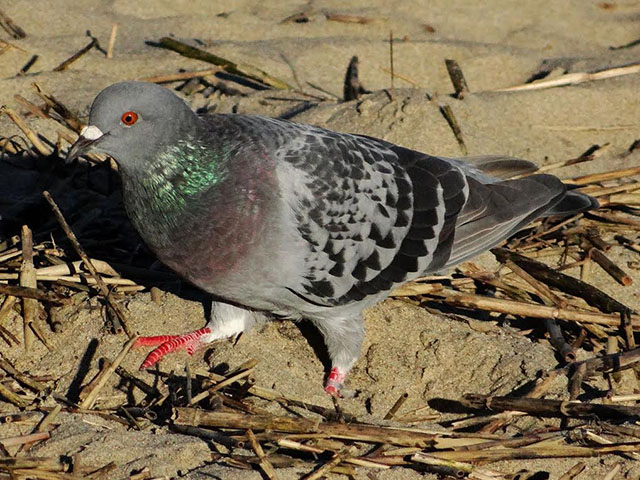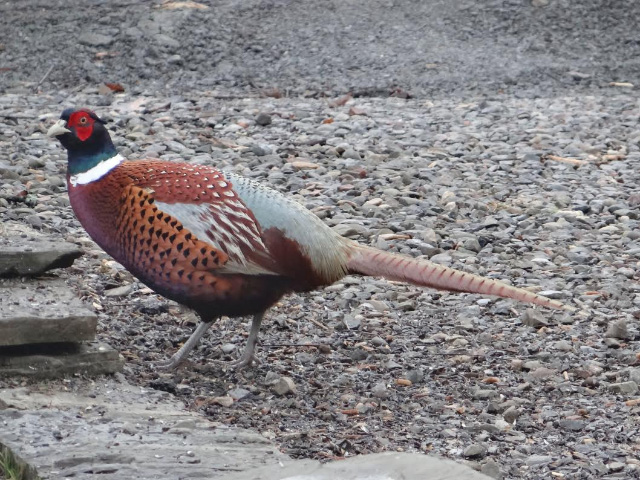Welcome birders to New York state and Broome County! Now tourists visiting the NYS Gateway Center on Interstate 81 near the state line can avail themselves of information supplied by The Naturalists Club on 11 choice birding locales in Broome and Tioga counties.
Exact directions on getting to these spots are given, along with information on what might be found at each site. Laura Quintin, director of the center, encourages local people to visit the center and take advantage of this information. So, birders, now you know how you can learn where the birds are.
Locally, we are in a transition period, with most of the summer nesting birds leaving our area, and migrants from the north beginning to appear here as they pass through on their way south. Tree swallows, chimney swifts, red-eyed vireos, ruby-throated hummingbirds and common nighthawks are now only pleasant memories. The last wood thrushes, eastern kingbirds, gray catbirds and indigo buntings very soon will be gone. Woods warblers who had nested farther north are now being eagerly looked for by birders. Even when spotted, they can be confusing to identify, having molted into their perplexing fall plumages.
As these summer breeders leave, they are replaced in part by certain species that will spend the winter here, seeking weather conditions less severe than Canada’s. By mid-October, we can expect to have white-throated and American tree sparrows, rough-legged hawks, northern shrikes, snow buntings, common redpolls and pine siskins beginning to appear. Other species from farther north, such as white-crowned and fox sparrows, will be seen only until they continue their flight south.
Migrating raptors have already included several ospreys and broad-winged hawks, with the main raptor flight expected toward the latter part of October. This is also the time when Canada geese will be heard honking overhead as the flocks depart in their classic V-shaped formations.
On ponds look for transient duck species, and on river shores and mud flats search for shorebirds as they interrupt their journey to feed. At Upper Lisle marsh, solitary, spotted, least and semi-palmated sandpipers, greater and lesser yellowlegs and killdeer are being seen. Sightings of great egrets continue to be reported at Upper Lisle, along with pileated woodpeckers and bald eagles, both adult and immature.
This is a changing time of year that can reward a birder with unusual species possibly popping up in unexpected places. Any such sightings can be reported to the club hot line at 798-1919.
Birders’ Watch is provided by members of the Naturalists’ Club of Broome County. This column was written by Marie Petuh. For information on the Naturalists Club, write P.O. Box 191, Vestal, N.Y. 13850.
Posted in
Birders Watch Columns |
Comments Off on Changing seasons means birds galore
A friend recently asked me why I like bird watching. In the interest of brevity I responded in an off-handed way that I enjoy their bright colors and beautiful songs. Yet there is much more to it than that; the intangible aspects of this particular way of appreciating nature are hard to convey in casual conversation. It’s what the birds have to teach me that draws me to them, lessons about how to live.
Birding sharpens the senses as you learn to look deeper into the trees for a bird such as the brown creeper. In order to spot the creeper you have to widen your eye, for he is a small bird nearly indistinguishable in color from the tree trunk that he silently winds his way around. You also have to open your ears as you listen for the smallest of sounds, such as the soft scratching of the nuthatch as he tears off pieces of bark with his sharp bill, or the rustle of the tufted titmouse at the base of the tree as he tosses bits of dry leaves into the air in his search for insects. You learn to be more observant of the world around you.
From the great blue heron you learn to be still and to wait as he does, watching for that which he desires to reveal itself to him. The color of smoke, he appears barely more solid than the fog that surrounds him as he stand motionless in the shallows of a pond. If you should pursue him, he will lift off, fold his neck into an “S” curve and fly away, long legs trailing behind him. You learn to be patient and accept what the bird wishes to show you as you relinquish the need to be in control.
Sometimes it is necessary to accept defeat, as the scarlet tanager shows you one spring morning. You follow its hoarse call into the woods, pinpoint its location halfway up a steep slope, and lean against a sturdy oak in order to scan the tree tops for that brilliant red plumage. But it never does show itself, and with back aching from the deep grooves in the bark, you finally let it go and move on. On another day it may appear, shockingly bright at eye-level and almost within arm’s reach, and so you learn to take what comes.
The tiny golden crowned kinglet teaches you to be grateful on a winter’s day when you have trudged through the woods seeing nothing but gray trees and old snow. Desperate for color, your eye catches a flash of bright yellow – in a thicket by a small stream the kinglet flits energetically within the tangle of branches, his crown faring. Suddenly your day has brightened considerably.
But perhaps the most meaningful lesson you will learn from watching birds is how to retain the capacity for wonder. One day after completing a group walk, you wander off on your own into a small wooded area, where you see a few warblers in the bushes and a wren in the process of building a nest. Satisfied with the day’s “take,” you set out to return to your car, when you notice a large shadow pass overhead. Quickly lifting your head you see a large dark bird with a light tail, then you notice the white head and realize it is a bald eagle – the first one you’ve ever seen in the wild. It circles above you briefly, then heads off toward a nearby river, leaving you standing in a swamp on a sunny spring morning, head tilted back, breathless.
Birders’ Watch is provided by members of the Naturalists’ Club of Broome County. This column was written by Debra C. Spano. For information on the Naturalists Club, write P.O. Box 191, Vestal, N.Y. 13850.
Posted in
Birders Watch Columns |
Comments Off on Certain birds require certain powers of perusal
Paddling down the Susquehanna River, you may happen upon a great blue heron (Ardea herodias) standing patiently on the shore waiting for its chance to spear an unsuspecting fish, frog or crayfish.
In fact, you can look up from almost anywhere in the Southern Tier and see one flying overhead with slow and deliberated wing beats. Great blues make a unique and unmistakable silhouette in the sky with their graceful neck concealed in an s-fold and their long legs trailing dramatically behind.
These wading birds are called “great” for a reason – they are America’s largest heron. They stand 38 inches tall and have a 70-inch wingspan.
Their size alone can be all the positive identification you need, but this beautiful bird deserves a closer look. The adult great blue heron is a medium slate-blue color. It has a white face with Groucho Marx-type black “eyebrows.” These eyebrows are one of its most distinguishing features, separating this heron from others. This fowl’s fashion statement is made with a striped black and white tie-like marking along its throat.
Its long legs are a tasteful gray. This ensemble then is completed with a long, golden, dagger-like beak. Unfortunately, this graceful-looking beak is not a source of beautiful bird song – its call is a coarse croak.
Flamboyant plumes adorn the head, back and neck of the great blue heron during breeding season which is March through August. There is also an all-white phase of this same species that occurs only in Southern Florida.
According to a report by K. Hill of the Smithsonian Marine Station (http://www.sms.si.edu/IRLSpec/Ardea%20herodi.htm), great blue herons build nests in breeding colonies as high as 66 feet above the ground in trees near waterways. There are three to six eggs in a clutch. There is one brood raised each year, but if the nest is abandoned or destroyed, a replacement clutch can be laid.
Great blue herons are probably among the most recognized and prevalent of the wading bird species in the United States. I am happy to add that this waterfowl is not federally listed as either threatened or endangered – and I hope that it never needs to be.
Happy birding!
Birders’ Watch is provided by members of the Naturalists’ Club of Broome County. This column was written by Nancy McGee. For information on the Naturalists Club, write P.O. Box 191, Vestal, N.Y. 13850.
Posted in
Birders Watch Columns |
Comments Off on Great blue herons deserve to be called ‘great’
While out birding several weeks ago I stopped to locate the source of a faint whining noise. This time of year offers many unusual songs and call notes made by first-year birds begging for food or by youngsters who haven’t quite mastered the same musical abilities of their parents.
This particular note happened to be coming from a juvenile brown-headed cowbird, a common species with a not-so-common reproductive habit. I watched this bird for a few minutes, and his complaining whines were soon pacified by a tiny adult common yellowthroat with an inch worm. The size difference between the delicate warbler feeding the massive ugly-duckling cowbird chick was almost humorous, and made me wonder how the adult could possibly consider this giant its own offspring. This activity is due to a natural process called avian-brood parasitism and is the cowbird’s reproductive trademark.
The female cowbird builds no nest and cares for no young. The male, with a shiny black body and brown head, takes no part in the parenting process either. The female establishes an egg- laying territory in which she deposits single eggs in the nests of other species.
Cowbird incubation time is usually shorter than that of the host species, causing the cowbird chick to hatch sooner and grow faster than its competition. The cowbird chick does not intentionally kill or push out the host chicks, but their unfair size advantage generally causes the other chicks to die of starvation. This allows for the full attention and feeding efforts of the parents to be devoted to the gawky cowbird chick who in many cases can be up to three times larger than its parents.
This seemingly bizarre parasitic instinct is thought to be linked to the cowbird’s historic habit of following herd of bison leaving no time for nest building. They were actually once referred to as “buffalo birds.” Many species such as the American robin and the gray catbird can recognize the odd egg and will remove it from the clutch before hatching. Yellow warblers have been known to add layers of nesting material on top of existing clutches with cowbird eggs.
Throughout all this seemingly “heartless” parenting scheme, the young birds instinctively recognize their identity as cowbirds. They do not imprint on their host parents as nearly all other avian species do, and after fledging they will join other cowbirds, continuing their role as a parasitic species in this odd but complexly beautiful natural system.
Birders’ Watch is provided by members of the Naturalists’ Club of Broome County. This column was written by Erin Hewett. For information on the Naturalists Club, write P.O. Box 191, Vestal, N.Y. 13850.
Posted in
Birders Watch Columns |
Comments Off on Cowbirds are major moochers
I had heard and read about the large flocks gathering to roost, but never actually witnessed the event. Needless to say, when I was recently invited to see the “spectacle,” I jumped at the chance.
The sky, quite overcast, meant that dusk would arrive earlier tonight. At first, the gray blanket above seemed lifeless. Within minutes a twitter was heard, and a chimney swift was spotted. A fairly common sight around town, this brown swallow-like “cigar with wings” is quite a unique bird.
A second, and then a third bird appeared by a large chimney. Could these be the first arrivals, cueing the gathering to begin?
The group of birds grew to 15, then to 25. As the numbers increased, they circled closer to their cozy brick roost. The chattering was impossible to miss as more than 100 swifts flew in a large, unbroken circle around the chimney. They began to swoop as if challenging one of the group to make the first move. A few dove in, and the rest quickly followed until all but a few stragglers remained. There was a loud chattering as the last few found their way, and settled in for the evening.
The chimney swift is often seen in our cities and towns, nesting not only in chimneys but also in silos, barns, attics, steeples and, rarely, in a hollow tree. Unlike swallows, swifts cannot perch upright because their tiny feet are designed for clinging in a vertical position.
Swifts are almost always seen on the wing, feeding on flying insects. Listen for the “chip” notes and chattering from high above. Also note the short stubby tail and rapid, stiff wing beats.
In addition to fledgings of all kinds, other birds of interest are also being seen in the Southern Tier. Great egrets and snowy egrets have been spotted in Broome County. Also in Broome: Everything from marsh wrens to bald eagles. Red-headed woodpeckers were seen in Tompkins County, and an Egyptian goose in Tioga. The goose, mixing well with Canadian Geese, is likely a barnyard or collection escapee.
Birders’ Watch is provided by members of the Naturalists’ Club of Broome County. This column was written by Jon Weeks. For information on the Naturalists Club, write P.O. Box 191, Vestal, N.Y. 13850.
Posted in
Birders Watch Columns |
Comments Off on Gathering of swifts truly fascinating
One of the most-asked questions among birders when they are introduced is “what is your best bird?” To some of us that means the rarest bird. To others it means the prettiest bird. To others it is a bird that brings up a memory from the past.
Over the years we have had several birds that fit one or more of the requirements. Two birds that have appeared on the pages of this paper are theAnna’s hummingbird and the peregrine falcon. The peregrine has chosen to nest on the Security Mutual Building in downtown Binghamton and has delighted the non-birder as well as the birding community. This bird, once rare in our area, has become visible to anyone eager to see a rare raptor. The Anna’s hummingbird, on the other hand, is a bird that never was seen before of after its one-time visit to Binghamton’s South Side. Only because one family was willing to share this rare visitor was the Anna’s able to be seen by a great deal of people on the East Coast. Either of these two birds could be somebody’s “best bird.”
This past winter, a long-billed murrelet showed up on a local lake. Most members of the Broome Naturalists Club had never seen this bird. So a number of us piled into a car to see it. We found this bird only after a long, cold search of the lake. The bird was on the far side and we never did get a really good look. So even though this was a rate bird, nobody in our group put this bird in the “best bird” category.
One of the rarest birds in America is the whooping crane. Curing the winter months this bird can be found in a refuge in Texas. In order to see this bird at its best you must take a boat trip out into the refuge. Seeing not one but many of these magnificent birds is a sight to behold for any birder. The whooping crane is on a lot of “best bird” lists.
On one of our weed walks we came across a bird that is a hybrid between a blue-wing warbler and a golden-wing warbler. This hybrid is rarely seen and goes by the name Lawrence’s warbler. Because of its rarity and its beauty it landed on a number of “best bird” lists.
I have many “best birds” and I can give you a good reason for choosing any one of them. However, my stock answer is “my best bird is the next bird that I have not seen.”
In the recent past, a number of birds have been identified by members of the Broome Naturalists Club, such as black tern, king rail, cerulean warbler, yellow-throated vireo, rose-breasted grosbeak, Baltimore oriole and cliff swallow.
If you wish to join us on our next walk, we meet at 8 a.m. Wednesdays in the Sears parking lot at the Oakdale Mall. Come and join us, you will be glad you did and perhaps you will get a “best bird.”
Birders’ Watch is provided by members of the Naturalists’ Club of Broome County. This column was written by Dan Watkins. For information on the Naturalists Club, write P.O. Box 191, Vestal, N.Y. 13850.
Posted in
Birders Watch Columns |
Comments Off on Birders like to share their ‘best birds’
“Weedwalkers” is a strange name that would normally mean people walking through weeds. I was 13 years old when I first heard of weedwalkers. Being 13 and very interested in birds, there were few people my age who shared the same interest. That is until I met the “weedwalkers.”
We met on Wednesdays. A devoted and interesting person offered to pick me up, since I did not drive, and take me to our meeting place. It was the “weedwalkers” that opened my eyes to nature in all of its splendor. Although birds were my main interest, we also studied flowers, amphibians, reptiles and whatever was on the menu for the day or crossed our paths. This was nature study 101 for me and it was a perfect jumping-off place to be with people who had the same interests as me. I wasn’t an alien after all!
Our latest weedwalk was in Chenango County at what was once a gravel pit. Over the years, nature has reclaimed it. The Chenango Canal also runs along the edge of this area. It plays host to beaver, muskrat, mink and an occasional otter.
Over the calendar year the 1- square-mile area averages 106 species of birds. There are some constants, but occasionally the unusual shows up. This past year it was a covey of eight bobwhite quail. Although they have spread out some because of the breeding season, the weedwalkers did get to see one (their first bird of the day) as they exited from their cars.
Other highlights were willow, alder and great crested flycatchers, purple finch, a sapsucker and 26 other species. Oh, and lots and lots of weeds.
Birders’ Watch is provided by members of the Naturalists’ Club of Broome County. This column was written by Bruce Bozdos. For information on the Naturalists Club, write P.O. Box 191, Vestal, N.Y. 13850.
Posted in
Birders Watch Columns |
Comments Off on Weedwalkers appreciate more than birds
In early spring, while a chill is in the air, on a moonlit walk, you may occasion to hear an unusual, regularly repeated, nasal, PEENT sound.
For the past two springs we’ve heard this sound thinking it was a frog or insect. This year curiosity got to us.
It was dark, with a full moon, and there we were, Dani and I in our meadow, flashlights in hand following the repeated PEENT.
For about half an hour we observed the continuous aerial dance characteristic of the male woodcock during courting and through incubation. This ritual begins with the nasal PEENT, followed by his rising into the air and flying in wide circles. After reaching about 50 feet, his wings start to make a twittering sound. At 200 to 300 feet the twittering stops and he gives a bubbly chipping song, while starting a zigzag descent, landing near the spot of takeoff. These displays are given at dawn, dusk and all night when the moon is full.
The American woodcock is a 9- to 12- inch-long, plump bird. It is brown above and pale orange-brown below. The bird has a large head and large eyes with a white eye-ring. The bill is long, enabling the bird to devour earthworms, insects and seeds. These birds breed in New York in April and migrate to Texas and Florida for the winter.
The nocturnal nature of the American woodcock challenges the bird watcher to make special preparations to observe their mating ritual.
So during April and May, listen for the PEENT, put on your hat, grab a flashlight and head out for a truly unique viewing.
Sightings
On June 5, naturalists saw the following birds at Jones Park, Vestal: pileated woodpecker, yellow-bellied sapsucker, prairie warbler, Louisiana waterthrush, scarlet tanager, indigo bunting, field sparrow, red-eyed vireo and eastern pewee. They also saw many wildflowers.
Birders’ Watch is provided by members of the Naturalists’ Club of Broome County. This column was written by Linda Vick. For information on the Naturalists Club, write P.O. Box 191, Vestal, N.Y. 13850.
Posted in
Birders Watch Columns |
Comments Off on Migrating woodcocks put on a show worth watching
We in Broome and Tioga counties are fortunate to have access to a good number of natural areas in which to indulge our passions for birding and other nature activities. Cole and Greenwood parks, Hawkins Pond, Jones Park and Roundtop Park in Broome are prime areas. Dorchester Park-Upper Lisle, which has been designated as an Important Birding Area (IBA) by the National Audubon Society.
In Tioga County, the Waterman Nature Center and its Brick Pond, along with many New York State Forest areas, are choice sites to look for birds.
And Broome boasts three other gems:
1) Binghamton’s Ely Park Nature Trail, just south of the golf course, is a rewarding location from early spring through fall. Wood thrushes, indigo buntings, scarlet tanagers, red-eyed vireos and eastern towhees are regularly heard and seen.
Resident warblers are American redstart, ovenbird, common yellowthroat and chestnut-sided warbler.
This is truly an outstanding birding spot, easily accessed, wild and yet well-maintained.
2) The second gem available to us is the 350-acre Binghamton University Nature Preserve. A broad range of species find the preserve, with its varying habitats of pond, marsh, forest and brush, an attractive place to visit in migration or to stay and breed.
A few of the trails can be moderately strenuous, but the most popular for viewing purposes, the Marsh and Pipeline trails, are level.
3) Lastly, county-owned Aqua-Terra Park, off Maxian Road offers excellent birding in brushy and marshy habitats, as well as pond and woods. This park is a treasure for those who relish a closeness with unmanicured nature.
Birders’ Watch is provided by members of the Naturalists’ Club of Broome County. This column was written by Marie Petuh. For information on the Naturalists Club, write P.O. Box 191, Vestal, N.Y. 13850.
Posted in
Birders Watch Columns |
Comments Off on Area is blessed with birding spots
I’ve been fascinated by birds from the time I was a little kid growing up in Pennsylvania. I was especially fond of a beautiful yellow bird that reappeared every spring in my hometown who most folks called a “Wild Canary”. In another area of the state people called it a “Summer Yellow Bird”. Since those early days I have found out that this bird belongs to a class of birds called Warblers and wasn’t, as I thought, an escaped pet shop canary that had gone “wild”. On close inspection you will find that his yellow breast is streaked with rusty red unlike a pet canary’s plain yellow breast.
Another warbler that is now named the “Yellow-rumped Warbler” was once called “Myrtle Bird” and is sometimes confused with the American Goldfinch. The Yellow-rumped Warbler earned the name of Myrtle Bird (then later Myrtle Warbler) because of its fondness for Bayberries, which were formerly known as Myrtle Wax berries. Yellow-rumps are the first of the warblers to arrive in the spring and next to Yellow warblers, are the most abundant in numbers. The Yellow Warbler prefers shrubby, second-growth areas and can be found close to human habitats like garden shrubbery and thickets while the Yellow-rumped Warbler habituates the deeper mixed forests. A good way to distinguish the Yellow-rumped Warbler from other woodland warblers is to remember the number “4”. While most woodland warblers have some combination of yellow, black and/or white on their bodies, only the Yellow-rumped has four yellow spots: one on the top of its head, one on its rump and one on either side of its breast.
Spring migration has begun in earnest and now confident with my “adult” knowledge regarding warblers I visit Round Top Park, one of the best “migrant traps” in our area. Migrating birds use landmarks like Round Top to rest and eat as they head to their breeding territories. If you are lucky to be at the park when a large group of warblers “fall out” (this is bird lingo for a big bunch of birds landing and eating at the same time) you may see as many as ten different species in one tree gobbling up bugs. It was during one of these fall outs that I witnessed one of the largest bands of Yellow-rumped Warblers to hit the park. It was late in the afternoon and warm and sunny so that I wanted to stay and look at just how pretty the river valley below us was. The Yellow-rumps began landing in the tree tops along with many other warblers in what I estimated to be groups of ten. The musical din from the birds calling and singing was so overpowering that even my old dog, Gyp, who is usually more interested in looking for things in the dirt than for things in the air, sat down and just looked up along with me at the show going on in the tree tops. I quit trying to count the Yellow-rumps after I numbered seventy of them. The fallout lasted for little more than an hour and then the birds just trickled off to somewhere else. We were left behind by the gaily-colored warblers until only one song could be heard rising from the woods surrounding the park. It was the softly-warbled twilight song of the American Robins who now gathered in the woods singing their evening chorus.
Birders’ Watch is provided by members of the Naturalists’ Club of Broome County. This column was written by Sara Kinch. For information on the Naturalists Club, write P.O. Box 191, Vestal, N.Y. 13850.
Posted in
Birders Watch Columns |
Comments Off on Migrating warblers are rays of sunshine
← Older posts Newer posts →
